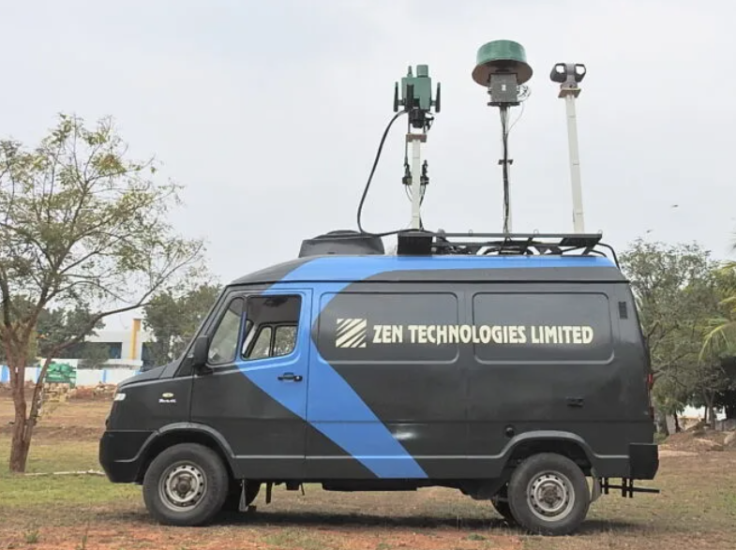Zen Technologies, a provider of military training and anti-drone solutions, reports an export order win valued at approximately USD41.5 million to deliver military training and anti-drone solutions.
According to the press release, Zen Technologies provides land-based military training simulators, driving simulators, live range equipment, and anti-drone systems, supported by a dedicated Research and Development (R&D) facility in Hyderabad.
Zen Technologies’ anti-drone system adopts a multi-layer, multi-sensor architecture designed to provide comprehensive security against drone attacks. The system comprises several modules that collectively contribute to the detection, classification, tracking, and neutralization of drone threats:
- RF Based Drone Detector (RFDD): The RFDD detects drones by analyzing the radio frequency communication between the drone and its Ground Control Center (GCC). By continuously scanning a wide band of frequencies commonly used by drones and their GCCs, the system identifies signals of interest, estimates the drone’s direction, and employs an array of receive antennas to pinpoint the signal’s source.
- Video Based Drone Identification & Tracking (VDIT): Equipped with day and night camera sensors mounted on an automatic servo-based positioning system, the VDIT module captures video and images of drones. Working in tandem with the RFDD, the VDIT confirms the presence of a drone and initiates tracking. Video feeds are processed by software algorithms, facilitating accurate identification and tracking of drones within a range of up to 3 km.
- RADAR: To detect autonomous drones operating without a direct link to their operators, the system incorporates an X-band 3D RADAR. This RADAR provides precise data on the drone’s coordinates, including azimuth and elevation. The RADAR’s feed is integrated into the data fusion center, enhancing remote monitoring capabilities.
- Data Fusion and Command Center (DFCC): The DFCC acts as the central hub for integrating data from the RFDD, VDIT, and RADAR modules. It employs detection and classification algorithms based on both RF and visual data, presenting a comprehensive threat situation to the user. The DFCC’s user interface incorporates a map with defined zones of threat and allows for customized monitoring areas and threat identification zones.
- Drone RF Jammer (DRFJ): The DRFJ disrupts the communication link between the drone and its GCC by jamming ISM bands, GNSS signals, mobile signals, and other intercepted frequencies. By automatically generating jamming waveforms based on frequencies detected by the RFDD, the system utilizes directional antennas to radiate the jamming signals. Users can also manually input jammer frequencies for added flexibility.
- Hard Kill Options: Zen Technologies’ Anti-Drone System offers two hard kill options to neutralize drone threats. The first option is kinetic-based neutralization, which employs a gun capable of auto-aligning with the target and firing bullets to physically destroy it. The second option is a net-based drone catcher, where a dedicated drone equipped with a hanging net is launched to capture rogue drones safely. This option is particularly suitable for small rogue drones carrying potentially harmful explosives.
For more information visit:




